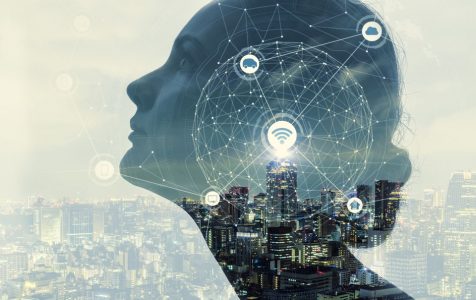The past decade has been one huge transformation for the banking industry. You can say that we’ve transferred from traditional in-person meetings at physical branches to ATMs, and finally, now we’re at the stage of mobile and online banking. The adoption of technology and the widespread use of the internet has pushed banks and other businesses to adapt and find new, more convenient ways to satisfy their customers’ needs.
Of course, with any kind of technology comes security challenges. That’s why such an online shift accelerated the need for new fraud prevention measures. The banking industry is no exception. With fraud losses reaching new heights, banks started implementing digital tools and automatic services to combat fraud more efficiently. This is where artificial intelligence comes into the picture.
Types of Fraud in Banking
The biggest threat to banking is not being aware of the most common types of fraud along with the potential cybersecurity risks that can lead to data breaches, fines, and reputational loss. It’s no secret that the cybersecurity and fraud prevention landscape is shifting. At the same time, bad actors and criminals are getting wiser. As a result, banks need to be well prepared and know what they are up against:
- Unauthorized transactions. These are the transactions that the account holder did not approve. To this day, banks and consumers struggle to fight against fraudulent purchases. For example, a recent report by Forbes showed that eight out of ten mobile banking customers are worried about card fraud. On top of that, Statista projects that the value of fraudulent transactions will reach $38.5 billion by 2027.
- Identity theft. Identity fraud remains one of the most dangerous frauds in banking. That said, the FTC named identity theft as the most common complaint reported by consumers. Criminals open new bank accounts or apply for loans using stolen identities. For instance, if a fraudster has gained access to your personal information, they can commit credit card scams and make unauthorized withdrawals.
- Phishing attacks. A single click on a phishing link can result in unauthorized credit card charges or even lead to identity theft. On top of that, banks are the top targets for hackers when it comes to phishing attacks. For this reason, it’s important to educate staff and have a strict security protocol in place since most phishing attacks happen due to human error.
How Banks Use AI in Fraud Detection
Artificial intelligence (AI) has become the go-to tool for fraud prevention due to its ability to scan, analyze and detect suspicious patterns. Banks also acknowledge AI and its major benefits. For this reason, developers create different applications using AI for the financial industry. And there’s a good reason for that. Scammers need to be stopped before the fraud actually occurs. For example, banks use AI algorithms to scan and monitor transactions. Even if the fraud is detected, with a robust fraud detection system, the bank can avoid further consequences.
Here are some examples of the most popular AI-powered tools in the banking industry at the moment:
Fraud Scoring
Artificial intelligence is used to create and assign unique fraud scores to banks’ customer profiles and their transactions based on collected data, such as transaction history. The risk scores are based on different variables, such as the customer’s IP address, the time when the purchase was made, their location, or the frequency of their card use. In general, fraud scoring tools are used for efficient approval or denial of a certain transaction or a customer that wants to access financial services. All thanks to artificial intelligence and machine learning enable that fraud scoring.
Purchase Profiling
Banks build purchase profiles as a more accurate fraud detection technique. In this case, artificial intelligence helps financial institutions to understand typical customer behavior. That means AI and machine learning help screen huge amounts of data, sorting out different types of behavior patterns in customers. As a result, purchase profiles help predict the next steps that impact future behavior. AI also helps update the profiles in real-time, saving time and costs for banks and other businesses.
Customer Authentication
Banks and various Fintech players use digital identity verification services to check if the customer registering to their platform is legit. This prevents fake and stolen identities from accessing important financial information. In this scenario, AI ensures that the process can be done remotely and automatically without having to visit physical branches. AI ensures accuracy and checks the ID document or password by scanning multiple points and databases. If the user tries to complete the authentication with a fake document, they’re rejected from accessing financial services.
Business Verification
Similar to customer authentication, AI-based authentication services help banks and other organizations to screen their partners to determine their authenticity. AI algorithms scan the other business’ websites and social media networks. Business Verification also reviews the company’s address; this way, helping detect fraud if the company that’s being screened is hiding under a fake name or address, and even if they’re using shell schemes to launder money. In a traditional scenario, banks had compliance teams and people reviewing multiple databases manually. Now, AI does most of the work for them without any errors.
Final Thoughts
Efficiency, scalability, accuracy. These are only a few benefits that artificial intelligence brings to the table for the modern fraud prevention landscape. That’s why the financial industry is utilizing this technology, making it easier for humans to detect crime. In a sense, machines and digital tools are superior since they can spot complex patterns in real-time as well as adapt and learn from gathering and analyzing data automatically. Banks suffer from fraud and its losses. That’s why it’s clear that AI tools will remain in high demand for all financial institutions.
